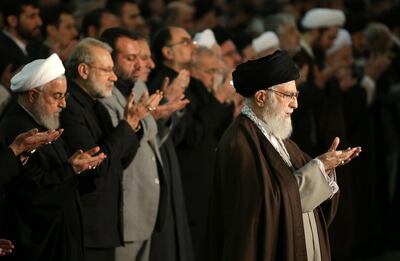The island of Shemya is American territory on the ends of the earth. It is on the Aleutian chain of islands, the part of Alaska that stretches across the inhospitable waters of the north Pacific, where North America gets close to the far east of Russia.
In 1942, during the Second World War, Japanese soldiers landed on the Aleutians following their attack on Pearl Harbour – the first time the US was invaded since the War of 1812. When I visited the Aleutians a few years ago, courtesy of the US military, I was taken to see rusty old Japanese military vehicles and a monument from Japanese veterans dedicated to comrades lost in combat.
The Aleutians are so remote, even though they are part of the US, that during the war the US military command in Washington simply ignored the invaders and fought the war in the Pacific much farther south. By the 1980s, the islands assumed far greater strategic significance. Then president Ronald Reagan pursued a “New Maritime Strategy”, which meant beefing up US forces in the north Pacific against the threat from the Soviet Union.
The Cold War

Alaska already had an early warning system in case of a nuclear war, and that too was enhanced. When I visited US bases there, including Shemya and Adak, they were busy tracking Russian Bear bombers moving towards American airspace and scrambling US F15 fighter planes to turn them away. In the base stores, you could buy T-shirts and baseball caps that read: “Shemya: It’s not the end of the world, but you can see it from here.” These were frontline US troops preparing for nuclear Armageddon.
Later, I filmed in a hotel at a place called Greenbrier, a couple of hours drive from Washington DC, where in the 1950s the US government constructed a secret, massive bunker as a safe place for members of the US Congress to meet in case of nuclear war and the destruction of American cities. It seems like ancient history now but television programmes at the time included many documentaries like the one I was filming and scary dramas about how, if it came to war, the entire planet was doomed. Those of us who did not die in a nuclear exchange would perish from radiation sickness or in a “nuclear winter” in which no crops would grow.
The final scene from Dr Strangelove
However now, as we focus on another threat to our lives, our economies and our world – coronavirus – it is curious to compare all these elaborate and expensive preparations for nuclear conflict with the lack of preparation in western countries and in the states of the old Soviet Union for the global pandemic we are now experiencing.
Despite numerous warnings from virologists and epidemiologists that Sars and Mers would eventually be followed by something much worse, the world is still playing catch up on coronavirus.
Covid-19 response around the world














Perhaps even more surprising, the danger of nuclear war has been forgotten in the public imagination but it has not gone away. The threat to the Gulf region and beyond from Iran's nuclear programme has not been eliminated. North Korea has not abandoned its own extremely provocative missile programme. And figures released in the past few days have shown continuing reinvestment round the world in nuclear arsenals.
In 2019, according to the International Campaign to Abolish Nuclear Weapons (ICAN) the nine countries with nuclear weapons spent a total of $72.9 billion on those weapons, a 10 per cent increase on 2018. Of that sum, around half – $35.4bn – was spent by the Trump administration.
The Iranian problem
ICAN, as its name suggests, wants nuclear weapons to be banned. It points out that so much money that could be spent on making the world healthier – and preparing for the certainty of future pandemics – is being spent on the unlikelihood of a nuclear conflict.
While this argument is attention-grabbing, it does not face up to hard reality. Just because we were unprepared for Covid-19 does not of itself mean nuclear states should simply destroy their stockpiles. Events in the sea lanes of the Gulf remind us of the old Cold War saying, that the price of peace is eternal vigilance. Nevertheless, the dislocation caused by the virus has made many of us re-think our personal priorities – family, friends, work and what makes us happy.
North Korea's recent missile launches
Perhaps the pandemic may also make governments reassess their own priorities. How many nuclear weapons are "enough"? Do we still believe in the doctrine of Mutually Assured Destruction – or MAD? Could we cut nuclear arsenals and put more effort into engagement with Iran and North Korea – difficult though that is – to try to prevent a new nuclear arms race?
This year’s US presidential election, combined with an economic shock and the biggest threat to world health for a century, provides an opportunity to re-think our priorities. If we can spend billions every year on bunkers, missiles and early warning systems in the hope of preventing global conflict – and not see that investment as wasted – can we switch more investment to preventing and treating global health threats?
Gavin Esler is a journalist, author and presenter



